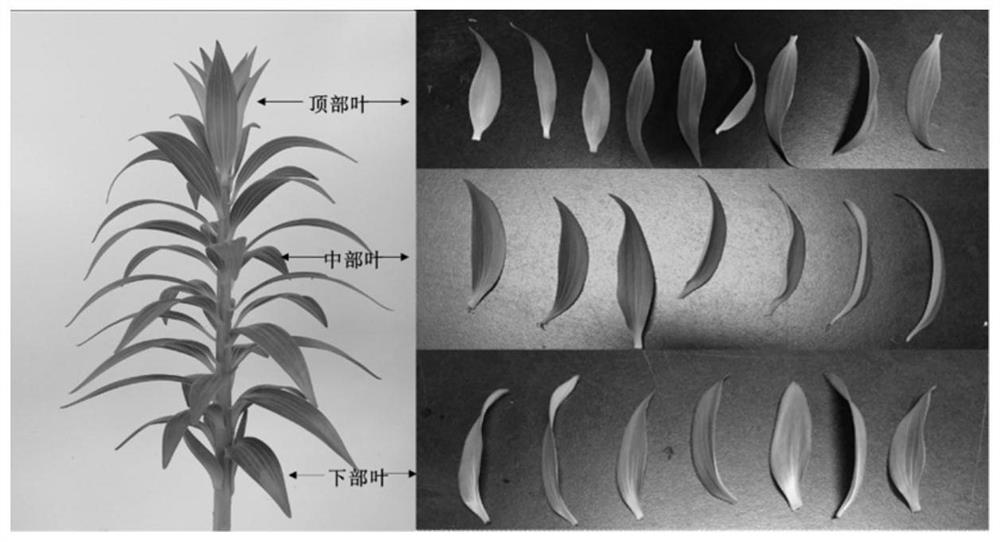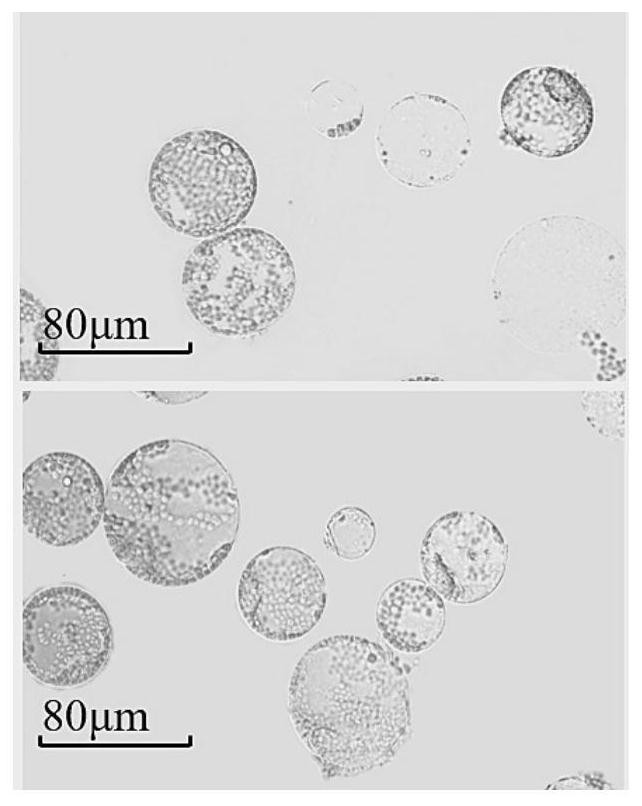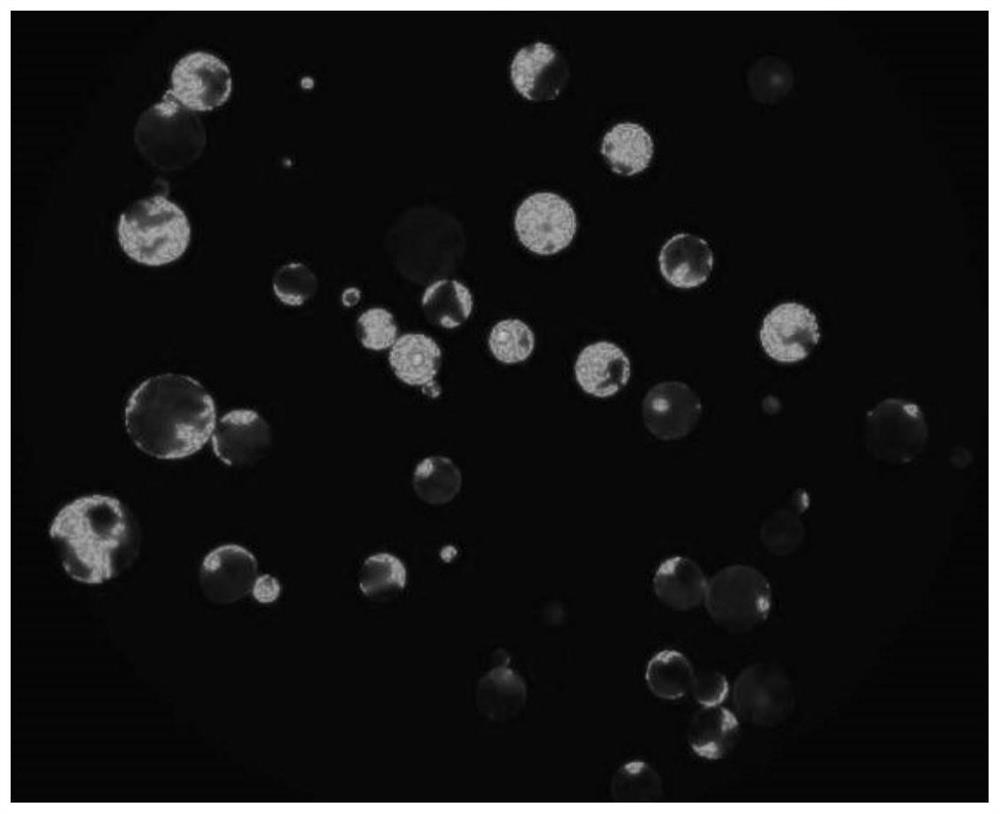Preparation method of lily mesophyll protoplast
A technology of protoplasts and lily leaves, applied in the field of preparation of lily mesophyll protoplasts, can solve the problems of less research on mature plants, failure to obtain regenerated plants, etc., and achieve the effect of overcoming low separation efficiency
- Summary
- Abstract
- Description
- Claims
- Application Information
AI Technical Summary
Problems solved by technology
Method used
Image
Examples
Embodiment 1 100
[0040] The preparation method of embodiment 1 lily mesophyll protoplast
[0041] The present embodiment provides the method for the separation and purification of lily mesophyll protoplasts, the method comprising the following steps:
[0042] 1. Dark pretreatment: select oriental lily 'Sorbonne' plants that have grown for about 30 days and are in good condition and free from diseases and insect pests, and perform dark treatment at room temperature for 48 hours.
[0043] 2, material processing: the top new leaf ( figure 1) rinse with clean water, soak in soapy water for disinfection, rinse with running water, soak in 75% alcohol for 5 minutes, rinse with sterile water, dry the water, and set aside.
[0044] 3. Enzymatic hydrolysis treatment: Cut the material obtained in step 2 into strips with a width of 2 mm with a sterilized blade, weigh 1 g of strips, and put them into 10 ml of enzymatic hydrolysis solution with tweezers. Use a vacuum pump to extract in the dark for 30 min...
Embodiment 2
[0051] The influence of embodiment 2 dark treatment on the preparation of lily mesophyll protoplast
[0052] For the dark treatment time in the method of Example 1, the present invention sets 5 time gradients: 0, 24, 36, 48, 72h. The material after dark treatment was subjected to enzymatic hydrolysis and purification according to the method in Example 1. The results showed that the leaves should be treated for 48h (Table 1).
[0053] Table 1 Yield and vigor of lily protoplasts after dark treatment
[0054]
[0055] Note: The same lowercase letters are not included, indicating that the difference is significant at the P<0.05 level.
[0056] As shown in Table 1, the dark treatment had a very significant effect on the yield of protoplasts in the leaves of Lily, and as the treatment time was extended, the yield of protoplasts increased significantly ( Figure 4 ), the protoplast output of leaves reached the maximum 7.30×10 after 48 hours of treatment 5 individual / g, at this...
Embodiment 3
[0057] Example 3 Effects of Enzyme Concentration Ratio, Enzymolysis Time and Material Collection Period on the Preparation of Lily Mesophyll Protoplasts
[0058] For the material collection period, enzyme concentration ratio and enzymolysis time in steps 2 and 4, the present invention sets 4 factors and 3 levels of L 9 (3 4 ) Orthogonal test (Table 2). The cellulase concentration level is 1%, 1.5%, 2%; the isolated enzyme concentration is set to 0.2%, 0.5%, 1%; the leaf enzymatic hydrolysis time gradient is 4h, 7h, 10h; the leaves are taken from plants that have grown for about 30 days The upper, middle and bottom blades ( figure 1 ). Enzymolysis was carried out according to the test conditions of each group, and the yield and activity of protoplasts were counted.
[0059] The results are shown in Table 2. It can be seen from the range (R value) that the order of influence of the four factors on leaf protoplast yield is: cellulase concentration > sampling site > isolated e...
PUM
 Login to View More
Login to View More Abstract
Description
Claims
Application Information
 Login to View More
Login to View More - R&D
- Intellectual Property
- Life Sciences
- Materials
- Tech Scout
- Unparalleled Data Quality
- Higher Quality Content
- 60% Fewer Hallucinations
Browse by: Latest US Patents, China's latest patents, Technical Efficacy Thesaurus, Application Domain, Technology Topic, Popular Technical Reports.
© 2025 PatSnap. All rights reserved.Legal|Privacy policy|Modern Slavery Act Transparency Statement|Sitemap|About US| Contact US: help@patsnap.com



